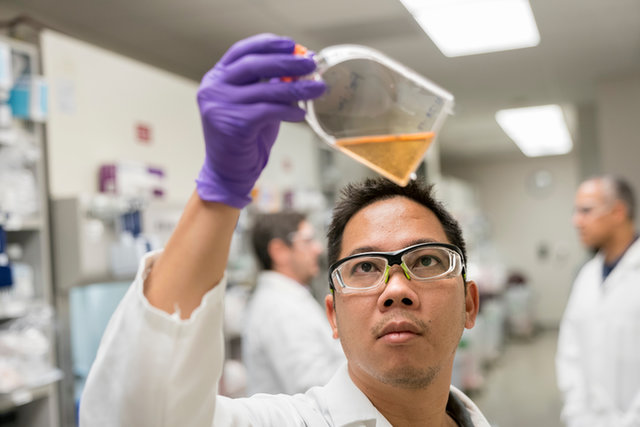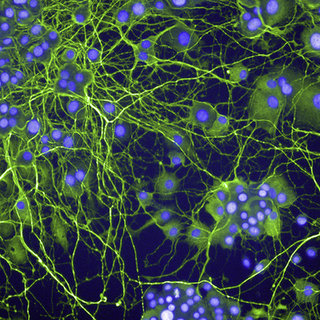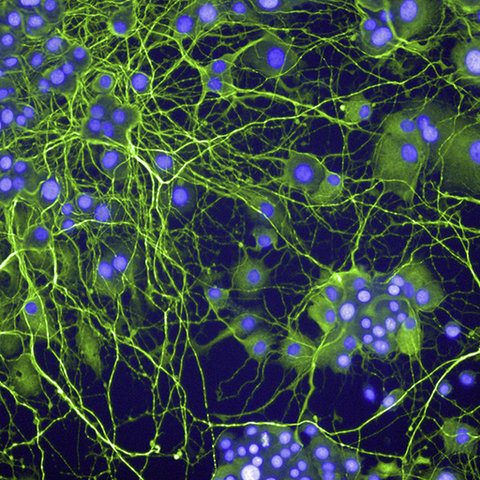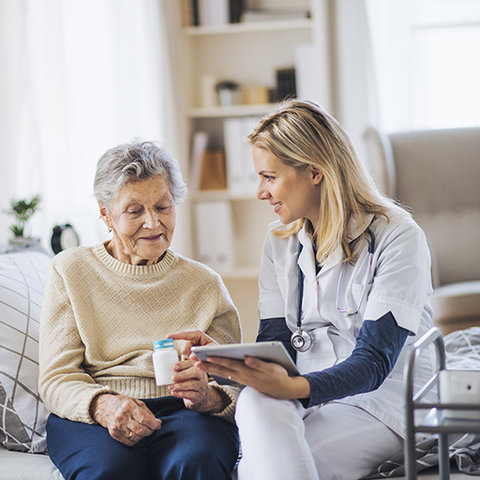How we work toward value-driven care
How we work toward the care of the future
As an innovative healthcare company, our mission is to contribute to sustainable, efficient and future-proof healthcare. This is a common mission that we are happy to take on with all the partners involved within the healthcare system. After we have developed a new treatment for the patient and it subsequently becomes available to them, Janssen continues to carry out research in order to make our medicines, therapies and vaccines even better and more focused in daily practice. In this way, they provide maximum health benefits, and we are able to monitor, substantiate and further increase the impact on our health care and on society. Moreover, by collaborating intensively with numerous external partners on the most important evolutions within healthcare, we want to ensure together that the patient has access to the latest innovative developments, but also that these are affordable. Not only now, but also in the future.
Smooth and equal access to care for all patients goes hand in hand with achieving the best possible outcome from treatment. Improving patient care is central, but the impact on healthcare providers and the cost to society as a whole are also important concerns. Therefore, increasing the quality and efficiency of our health care system is an eminently common ambition. This challenge is growing in a rapidly changing landscape, just think of the ageing population and the rise in the number of chronically ill people. At the same time, resources are limited, which (rightly) further increases the focus on efficient care. Based on a number of building blocks that we describe below, Janssen is investing in numerous projects that are in line with the healthcare of the future. We do this in long-term partnerships with, among others, healthcare professionals and hospitals, technology companies and patient associations.
Health: a concept with many facets
In a future-proof healthcare system that focuses on quality, we look for the best relationship between costs and outcomes of care. We look at the patient's entire experience of health, not just the biomedical outcomes, such as the size of a tumor, but also the outcomes in terms of quality of life that the patient considers important. For example, being able to resume hobbies or go back to work after treatment. The associated costs then include everything needed to achieve those outcomes. This includes not only the costs of surgery, drugs, diagnostics, and rehabilitation, but also social costs such as work absenteeism or disability, and the impact on a family caregiver. Thanks to some treatments, regular hospital admissions and the associated healthcare costs are avoided. Thus, innovations not only have a positive impact on the life of the patient, but also realize added value within the healthcare system and contribute to the prosperity of the country.
"A great achievement of the past year is the administration of a number of our medicines in the home environment, whereas previously they could only be administered in hospitals. We worked hard to make this collaboration with doctors and hospitals a success, so that patients could continue to receive their daily care even during the pandemic."

Willem-Jan Blok
Customer Strategy & Operations and Business Unit Director
€17 billion
Belgian healthcare costs are expected to rise from 7.8% of gross domestic product in 2019 to 10.1% of GDP in 2040. This is an increase of approximately €17 billion compared to 20191.
The right care in the right place

Research has shown that insights into patients' personal health experiences, supplemented by biomedical data, can help healthcare providers better tailor treatments to patients' needs2 These insights help to answer, in close consultation with the patient, the question of which treatment is best at which time. The corona pandemic also accelerated a number of trends. For example, digitalization gained momentum. Remote contact with a healthcare provider via telecommunications has gradually become one of the standard treatment options. Moreover, thanks to digital applications, patients are no longer obliged to travel to the hospital. And we fully support the development of offering care at home to patients, if they so wish. We are therefore thinking not only about the treatment itself, but also about how we can best strengthen our healthcare system and prepare it for these new innovative developments. That is why we have entered into a number of specific partnerships with hospitals, research institutions and other players within and outside the healthcare system to further shape evolutions related to telemonitoring, home hospitalization or integrated care. In this way, we improve patient care but also contribute to supporting doctors and care providers in fulfilling their tasks in the most sustainable way possible.
Part of this evolution towards more personalized care is the proper use of our new treatments. Safety and simplicity of administration are therefore central aspects of our research. But it goes beyond that. When the physician and patient decide on the treatment choice together, it increases a patient's involvement, satisfaction and compliance.3. Information about medical and non-medical outcomes of a new therapy or drug gives patients and physicians tools to reach an informed decision. The patient must be able to take control of his own health. This is why we at Janssen are working together with patient organizations and care providers on various projects in order to learn what is required to provide patients with good information, and how we as a pharmaceutical company can contribute to this.
"Organizing integrated care always has two principles: improving the quality of care for the patient and increasing the efficiency of the care provided. To ensure that innovation becomes - and remains - widely accessible to patients, we need to look very holistically at its payoff. We do this both for the patient - the right care at the right time in the right place - and for society as a whole."

Willem-Jan Blok
Customer Strategy & Operations and Business Unit Director
To measure is to know
To learn about how our treatments work in daily practice, we increasingly use so-called real world data (RWD): data we collect on the efficacy and safety of our treatments, medicines and vaccines when used in daily practice. We do this, of course, in compliance with laws and regulations regarding privacy and other patient rights.
By collecting this information in a standardized manner, we can compare different patients with the same condition (anonymously). Using this data, we learn more about which drug works best for which patient group and what the best treatment approach is. Together with the development of diagnostic tests and biomarkers - tools that help doctors and caregivers to initiate the right treatment - we can further improve and personalize care. Collecting data to best inform the choices of a treating physician or healthcare provider allows us to further increase the quality and efficiency of the chosen care. This has a positive impact on the health of the patient. But also within the healthcare system, it enables us to make increasingly better judgements and no resources and valuable time are lost.
Furthermore, accurately monitoring the results of a treatment is important in the context of the agreements within so-called risk-sharing conventions that pharmaceutical companies conclude with the government. In this way, the most recent innovations reach the patient quickly, while the government can monitor their effectiveness. The development of such new reimbursement models based on health outcomes therefore stands or falls with the right infrastructure and know-how regarding the collection and interpretation of these real world data. Finally, the collection of this data provides us with important insights that guide research and development (R&D) into new treatments. The innovation cycle starts again, as it were.

SDG 3 & 10: Readability of leaflets

SDG 3 & 10: Readability of leaflets
Janssen works together with the Federal Agency for Medicines and Health Products (FAMHP) in order to make information on medicines more transparent, easier to find and more accessible to patients. The aim of this cooperation is to provide information on our medicines - such as the leaflets - in a way that is understandable for everyone, and thereby to promote their correct and safe use. Also, each patient can make an honest assessment about whether or not to use the drug. In this way we contribute to the accessibility of knowledge in the field of health and medicines.

Health Monitor & Happi skin App

Health Monitor & Happi skin App
Janssen has developed the Health Monitor in collaboration with Nyenrode Business University in the Netherlands: a measuring instrument that maps out patients’ perceptions of health. The Health Monitor is used in cooperation projects with various patient groups, such as people suffering from inflammatory bowel diseases (IBD), HIV or cancer. This allows these patients to be continuously followed up on how they experience their health instead of having periodic consultations.
An example of how the Health Monitor is being used is the Happi skin app, the development of which was made possible in part by Janssen. This app supports people with skin conditions such as psoriasis and their treating physicians by creating insight into quality of life and managing medication. By integrating Health Monitor into this app, patients are enabled to easily measure their health experience and share it with their doctor. In this way, the healthcare provider involved gains many insights that he cannot always acquire during a consultation, for example due to a lack of time. If necessary, one can then take action. Moreover, the app helps the patient prepare for a consultation and thus gives him or her a much more active role in the treatment process.

Supporting patients with schizophrenia

Supporting patients with schizophrenia
Schizophrenia is a chronic, psychiatric disorder that often leads to relapse and consequent hospitalization. However, there is a broad scientific consensus that adherence and appropriate use of anti-psychotic medication improve long-term health outcomes and significantly reduce the likelihood of relapse.
We, therefore, consider it important that we not only develop the right treatments for these patients, but also support them during their care process. Janssen has therefore supported an external outreach program and associated research. The results spoke for themselves4. By following up these patients more assertively, for example by telephone or by visiting them, the number of relapsed patients and the related hospitalizations and hospitalized days dropped drastically. Thanks to this better follow-up, beds are freed up for other emergencies and the pressure on care is eased. In turn, we discuss the insights we gather ourselves with authorities to further improve the care path of patients.

COVID-19: Home Care

COVID-19: Home Care
Since the outbreak of the COVID-19 crisis, doctors and health care providers have been working with governments to rethink how best to organize patients' hospital visits to relieve pressure on hospital staff and protect vulnerable patients. Home care can be a good alternative to maintain continuity and quality of care, despite limited resources. The hospitals of UZ Leuven, AZ Groeninge, GHD Charleroi and CHU Liège have already had several years of experience in setting up a home care service. Janssen's vision is reflected in the support for the establishment and acceleration of a home care service. Together with other parties, we will also examine how home care can be made structurally feasible, without compromising on quality and safety.
Sources
- Duurzaamheid van het Belgische gezondheidssysteem, KCE Report 341A
- Van Os et al. (2005). Behandeling van depressie in de huisartsenpraktijk: de dokter als medicijn. Huisarts en Wetenschap, 48 (3), 95 – 101
- Lofland, J. H., Johnson, P. T., Ingham, M. P., Rosemas, S. C., White, J. C., & Ellis, L. (2017). Shared decision-making for biologic treatment of autoimmune disease: influence on adherence, persistence, satisfaction, and health care costs. Patient preference and adherence, 11, 947.
- Decuypere et al., PLoS One. 2017;12(6):e0179049
